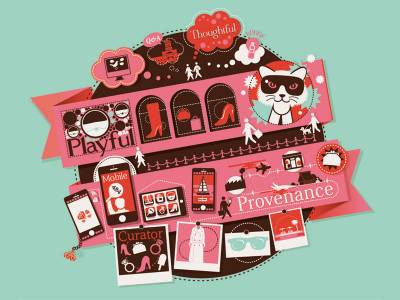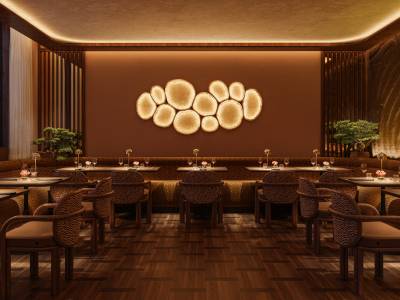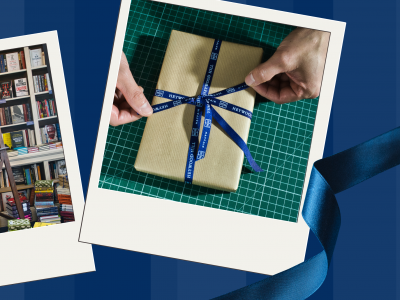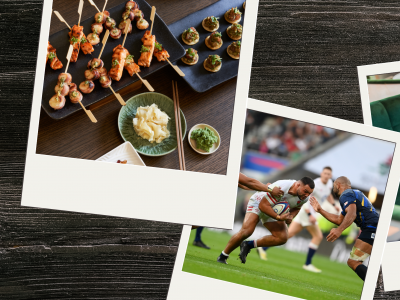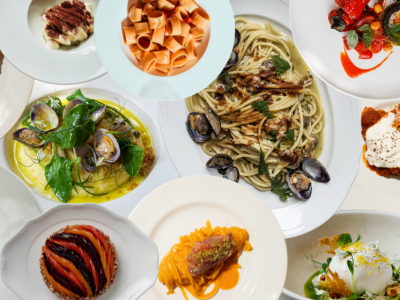Luxury has always been a slow-moving beast, trends-wise, but in recent years it has had to up the pace to keep up with an ever-changing customer base. The galloping growth of BRIC and other emerging luxury markets has created a new generation of luxury consumers whose demands, expectations and behaviours are different to more established regions and, more crucially, are constantly evolving.
Looking back: luxury trends from 2013
2012 saw us flirt briefly with emerging markets but one country dominated in luxury: China. What will 2013 bring? Lucie Greene of The Future Laboratory reports on the next big trends in luxury.
Young (on average 10 years younger than established market luxurians), educated and tech-savvy, this group, more than any other, has forced brands to embrace the digital sphere with innovative new social media, e-commerce and m-commerce platforms. Established markets, meanwhile, have presented their own set of challenges. Economic turmoil hasn’t scathed the richest individuals in Europe and the US but it has created an attitudinal shift among them, a rejection of needless, conspicuous consumption towards meaningful purchases, understated luxury and spending on experiences rather than physical assets. It’s telling that spend by high net worth individuals in established markets is level, or on the decline, while sales in experiential luxury are predicted to rise as much as 12 per cent year-on-year until 2013, according to the Boston Consulting Group. Women are also a growing luxury consumer force. HSBC predicts that women in China will take over from men as the lead buyers of fine jewellery and watches in the next few years. By 2020, the UK is expected to have more female millionaires than male ones, according to the Centre for Economics and Business Research. Meanwhile, female CEOs at Fortune 1,000 companies are expected to double by 2013, according to US-based Frontier Communications Corp. As a result, the luxury industry has had to become dynamic. It’s had to shun its mistrust of the digital landscape and become multi-channel, conversational and, above all, multi-faceted in its approach to messaging, platforms and retail. So how are brands staying ahead of the game? Read on for the key luxury trends for 2013.
Thoughtful luxury
Luxury brands have been sponsoring museums and cultural events for eons, but increasingly we’re seeing them position themselves as “thought leaders”, at the centre of ideas, trends and business debate. Whisky brand Chivas Regal hosted a debate about luxury and culture at London’s Victoria & Albert museum with Peter Aspden and Bettany Hughes in summer 2012. Armani has launched Armani Tweet Talks, online discussions led by high-profile fashion editors, focusing on fashion and sport, and the role of China in dominating fashion trends. Luxury and fashion brands have also ramped up their presence at key thought-leading events such as SXSW Interactive. American Express teamed up with Jay-Z for a concert while Nike hosted basketball courts. We’re also noticing luxury magazine and editorial brands move increasingly into thought leadership. Vogue staged its first festival in 2012, which was very much centered on trends, debate and the business of fashion. As Ilaria Alber, CEO of luxury brand consultancy Provenance, puts it: “Brands want to be seen to be at the forefront of new ideas, innovations and evolutions in international business forums—such as TED Global—that their clientele, many of whom are very high powered in this field, know and respect. By aligning with this, they put their brands on the same level.”
Playful luxury

From Karl Lagerfeld’s cat Choupette (which recently starred in a video for Net-a-Porter and even has its own Twitter account) to Yayoi Kusama’s quirky window displays for Louis Vuitton, there’s been a distinct shift in luxury recently. After years of self-reverential arty videos and installations, it is embracing humour, wit and storytelling. Moncler is launching a new comic book series based around its duck mascot. Mulberry’s autumn/winter 2012 campaign has the models clutched by giant furry beasts resembling characters from cult children’s book Where the Wild Things Are. Even the accessories at spring’s round of shows featured playful hints—Chanel had giant hoop beach bags and sunglasses featuring cut-out Coco silhouettes, while Céline’s models walked in furry high heels.
Mobile luxury
If there’s one channel that will define luxury in 2013 and beyond, it’s mobile. From smartphones to tablets, it’s these devices, not laptops, that will become central to how luxury consumers shop and interact with brands. According to the Luxury Institute, seven in 10 (70 per cent) of wealthy consumers under 35 years old own smartphones—40 per cent own an iPhone and 24 per cent a BlackBerry—and 23 per cent have an iPad. Mobile channels become even more important in emerging markets, particularly frontier ones, where mobile penetration is extremely high across the board due to fewer fixed phone lines, and where a lack of infrastructure makes access to physical stores harder.

Indonesia is one of the biggest mobile phone markets in the world. Mobile subscriptions grew 70 per cent in Vietnam between 2000 and 2010, according to www.foreignpolicy.com. Meanwhile, Africa is the fastest-growing mobile market globally, and will account for sales of 738 million handsets by the end of 2012, according to GSMA. “Everything should be optimised for mobile phones,” says Milton Pedraza, CEO of the Luxury Institute. “Stores are still important for experiencing the brands but luxury consumers are hugely confident about buying luxury goods online. They’re worldly, familiar with the products and want the convenience of purchasing goods via phones.” Indeed. The barriers to making big-ticket purchases on phones no longer exist. Christie’s has introduced a live bidding app for iPhones, which is now generating single-item sales of more than $3m. YCO, the luxury yacht brokerage, has launched a sales app called YachtBox. Many fine jewellery brands now operate m-commerce from dedicated apps. Who knows, we could one day be seeing the Private Tropical Island bidding app…
Provenance, transparency, sustainability

In an atmosphere where consumers assume everything, even luxury, has been produced cheaply in a factory in Asia, luxury brands will have to work harder than ever to show their quality credentials. A clutch of brands has already started using direct control of the supply chain as a way to do this. Accessories designer Nancy Gonzalez owns her own reptile farms; Louis Vuitton has entered a joint venture with Singapore-based Heng Long for its exotic leather; Loro Piana has bought silk farms in Myanmar. Some groundbreaking labels are also using transparency in the supply chain as a selling point, both to reinforce a sense of luxury and also highlight ethical practice. Ex-Hugo Boss designer Hugo Pieters has launched Honest by, a new clothing line where every detail, from the carbon footprint to the price breakdown and manufacturing details, is available for consumers to read. It’s a bold move, and one that many brands would view as counterintuitive, but by divulging some of the product aspects that have been outsourced, Honest by actually reinforces the quality of the pieces. “Transparency is essential for luxury brands,” he told LS:N Global. “People read something in The New York Times about how a brand doesn’t produce everything in France or Italy anymore, which are the traditional countries for luxury production. They read the wallets or scarves are made somewhere else, but in terms of their perception it affects the whole brand. They think it’s all made in China. I was shopping with a friend recently in a luxury store and she said: ‘I may as well go to a high street brand and buy fast fashion because it’s all the same anyway. It’s just more expensive.’ That’s very dangerous. I know a lot of designers and brands that still produce in Italy. But because people know that ‘Made in Italy’ doesn’t necessarily mean made in Italy any more, there’s a confusion and mystery. It’s in the interest of luxury brands to be transparent about the production of their products.”
The eye of the curator
Sometimes a buzzword gathers so much momentum you can’t move for hearing about it. “Curator” or “curated” could well get this prize by the end of 2013. We’ve seen it building across 2012, this cult for editing and curating. Of course, this started out as an offer, something that concept stores could do, or a concierge perhaps for the cash-rich, time-poor. Then it was about tastemakers, stylists, magazine editors, or prominent bloggers handpicking pieces for publications and stores. Now, the onus is shifting to the consumer to be their own editor.
True luxury brands put excellence and product first, and let business follow
From Pinterest to The Fancy, consumers are becoming the new curators of the luxury landscape, sharing, tweeting and selecting their favourite shopping items, and in so doing becoming another marketing engine, and sometimes retailer for brands. Take Nuji for example. Launched by Dean Fankhauser in 2012, it’s a shopping site meets social network. Users create their own wish list, or “virtual fantasy store”, which friends can shop from. They can also get kickback from brands for any sales they generate. The Fancy works in much the same way—a social network meets blog meets shopping site that allows users to curate their favourite items and share them, through Twitter or Facebook, with friends or fans of their taste. In some instances, consumers are becoming virtual shopkeepers themselves. StyleOwner, a startup in the US, allows anyone to create their own virtual shop front, pick out their favourite gifts, and get affiliate fees from items they sell. “They say men are from Mars and women are from Pinterest,” jokes Alber. “Consumers at every label have become obsessed with discovering and sharing things they like. There’s a cult for taste sharing, wanting to show yourself to be a tastemaker or style leader.”
Meta-luxury v. everyday luxury
The Financial Times’ Business of Luxury Summit 2012 pointed to a shift happening in luxury at the moment, a polarisation between brands pursuing the masses with “everyday” luxury and lifestyle products, and those focusing squarely on the 0.1 per cent with ultra-luxury products. “Luxury is now for the masses and the classes,” proclaimed PPR Chairman François-Henri Pinault, making the case for diversifying into lifestyle products and multiple price points as the key to the future, while describing how high-end consumers were embracing luxury in every aspect of their life. Some, however, argue that this approach is bad for a luxury brand’s longevity in today’s tumultuous climate. Rebecca Robins and Manfredi Ricca, directors at brand consultancy Interbrand, and co-authors of 2012’s Meta-Luxury: Brands and the Culture of Excellence argue that luxury as a term has become bloated, overused and meaningless. They call for a refocusing on true luxury, luxury as a pursuit of painstaking craftsmanship, quality and excellence, to maintain consumer confidence and impress today’s discerning connoisseurs who aren’t fooled by luxury that isn’t credible. They argue that true luxury brands such as Hermès and perfumer Francis Kurkdijan put excellence and product first, and let business follow, and are still a commercial success because people believe in them. “It makes the brand irreplaceable, rather than disposable. Something truly unique. Consumers today are looking for something with meaning and longevity and this is the way to achieve that,” explains Robins.
Renaissance brands
One thing we’ve seen building across 2012 and believe will continue over 2013 is luxury “brandstanding”—in other words, brands are trying to establish themselves as more than just purveyors of fine goods, becoming educators, cultural leaders, and philanthropists. Where before, brands might sponsor a concert or event, now they are restoring national monuments (see Tod’s work with The Colosseum in Rome). They’re setting up educational foundations (see Louis Vuitton’s film school in Rome, or Condé Nast’s fashion college, due to open 2013). Simultaneously, they’re creating exhibitions about their own archives to place their own story in world cultural history, almost creating a mythology around their ascent. Louis Vuitton, Valentino, Dior, Chloé and many more have all created exhibitions in the past year celebrating their heritage and archive pieces.

The new sublimity
Luxury consumers, particularly in established markets, are suffering from sensory overload with the torrent of digital communication available, and an always-on work culture. As such, we’re seeing an increasing trend in travel, and experiential luxury, towards true escape, digital detoxes, and contemplation. Luxury resorts are springing up in remote, difficult-to-reach places with a close connection to the surrounding nature. Some resorts are asking visitors to leave their phones at the check-in desk, or have restricted wi-fi. Meanwhile, we’re seeing a real celebration of mindfulness, deep thought and spiritual wellbeing, both within businesses, new architecture projects and adult education, as people yearn for the sublime and intangible. “Cities are getting more and more crowded and there are no barriers to people’s contactability now. Luxury consumers are looking for escape and simplicity,” says Pedraza. Robins agrees: “It is indicative that Hermès’ theme for 2012 was ‘The gift of time’, with its strapline ‘Without time, nothing lasting or beautiful could be brought into being’. In the research that we conducted for Meta-Luxury, the common thread was this sense that true luxury is time, silence and space.”
